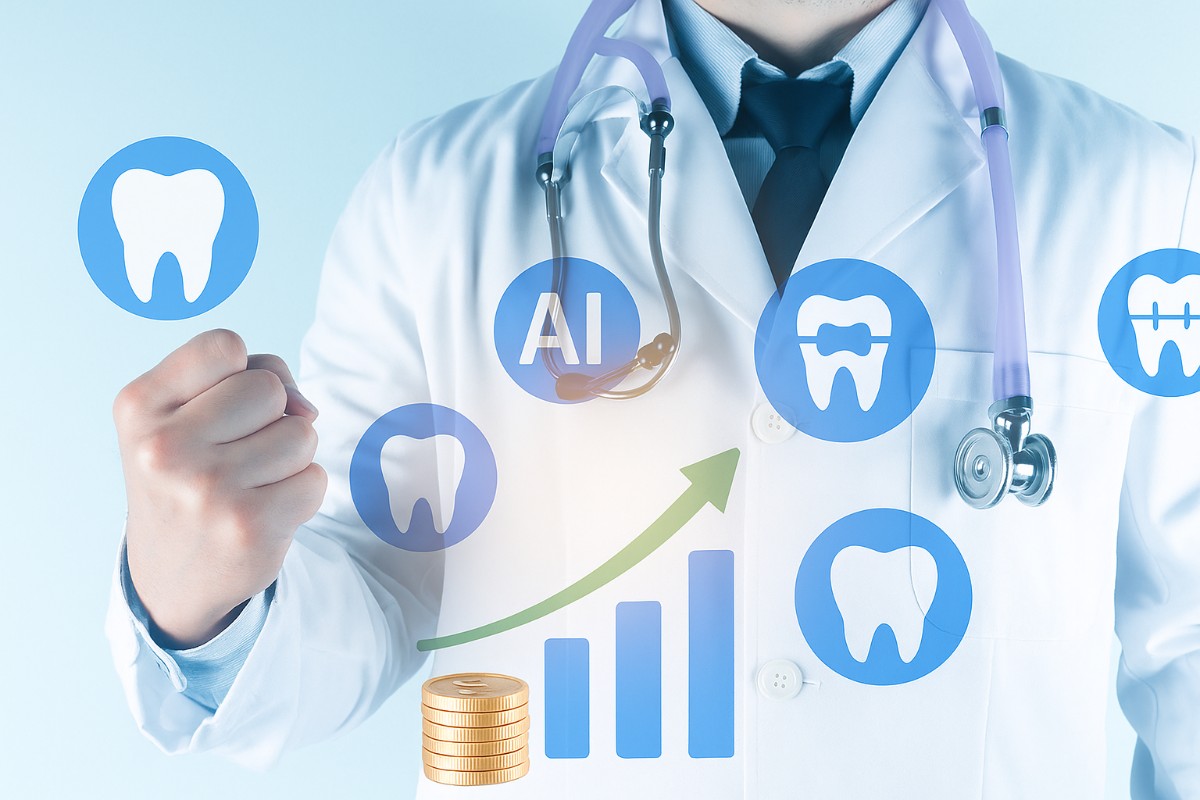

Artificial Intelligence (AI) in dentistry is no longer a futuristic concept ,rather it has become a present-day necessity.
Application of AI in dentistry is an innovative way to improve efficiency, precision, and patient satisfaction.
We talk a lot about implementing AI in dentistry and its benefits, but one should remember that at the end of the day running a dental clinic is similar to running a business.
And like any other business our dentists also seek for the margins and before implementing such tools, it is obvious to raises the questions like “What is the ROI of AI in dentistry?”
In this article, we’ll break down the costs involved in adopting AI, explore the practical returns, and help modern-day dental practices to understand whether this investment is worth it.
Before calculating the ROI of AI in dentistry, let’s first understand the investment and over head expenses of installing AI tools in dental practice.
Implementation of AI in dentistry includes the following cost components:
Initial cost comes from purchasing ai tools.
This may include:
Clinics might require upgradation of current systems in their practice like digital x-ray machines, computer systems, cloud storage and backups.
AI systems can be effective only when its users are as efficient as the tools in place.
While installing AI tools, one must encourage open conversation among their staff, and should invest for comprehensive staff training.
Training costs include:
Although AI tools come with inbuilt tutorials, a human led demo will help in easy conversation and plays an important role in solving doubts and inhibitions regarding the technology.
Many AI tools operate on a subscription model. Additional expenses may include:
The ROI of AI in dentistry becomes evident when you examine the measurable and hidden gains it offers.
Use case- Diagnostic tools like Pearl and Diagnocat use AI algorithms to analyze dental X-rays and CBCT scans, instantly identifying cavities, bone loss, abscesses, and other pathologies.
AI speeds up analysis of radiographs results in improved diagnosis and efficient treatment planning.
ROI Impact: Each extra patient served increases daily revenue. In busy practices, this could mean ?50,000+ monthly gains.
AI is consistent and doesn't fatigue.
AI tools trained on huge datasets are expert at analysing diagnostic images and can flag early signs of oral cancers or caries that might escape the human eye, reducing diagnostic errors.
ROI Impact: Fewer re-treatments, less patient dissatisfaction, and a lower risk of legal liability.
Use case- AI tools like NexHealth and LocalMed optimize appointment slots by predicting cancellations and sending automated reminders.
AI scheduling systems analyse patient behaviour and send smart reminders via email, SMS, or WhatsApp.
ROI Impact: Improved chair occupancy by 10–30%, especially in urban settings where appointment dropouts are common.
Use Case: AI chatbots on websites and WhatsApp handle routine queries, provide post-operative care instructions, and responds to FAQs
AI software often provides patient-friendly visuals that make problems and solutions easier to understand.
ROI Impact: Patients will agree to the treatment plans when they can clearly visualise their problems through digital images, increasing revenue per patient.
Clinics using the latest technology attract more patients, especially the younger generation who are more likely to leave positive reviews or refer others.
ROI Impact: Organic growth in your patient base, marketing through word of mouth, with zero marketing cost.
While the above benefits are easy to measure in monetary terms, the ROI of AI in dentistry also includes long-term, strategic advantages that often go unnoticed.
AI systems can easily handle an increase in patient volume without proportional increases in manpower. This is especially helpful for expanding clinics or those with multiple locations.
Scalability means the same AI infrastructure supports future growth.
AI tools can analyse large datasets to provide insights. You can identify:
In an increasingly competitive market, implementation of the latest technology will give dentists an edge over the other clinics.
Today’s patients prefer clinics that use the latest tools which offer AI-based services.
It helps in building trust among patients.
Reputation becomes a revenue driver.
AI is the stepping stone to even more advanced innovations like teledentistry, AR/VR in education, and predictive analytics for oral health.
Investing now ensures your clinic is future-ready.
Let’s look at how different clinics use AI tools in practice:
Each of these not only improves efficiency but directly affects the ROI of AI in dentistry.
Yes, AI adoption is scalable. Even small clinics can start with affordable tools like:
These can give high ROI in dentistry without large capital investment.
Expense/Benefit AreaCost (?)Return/Savings (?)NotesAI Diagnostic Software2,50,000 —Initial investmentSmart Scheduler + CRM Tool1,50,000 —Initial investmentTraining & Setup1,00,000 —One-timeAdditional 3 patients/day x 300 days —9,00,000Assuming ?1,000 avg revenue/patientReduced No-shows & idle time —1,00,000ConservativelyLower diagnostic errors —50,000Preventive savingsNet Yearly ROI —+?5,50,000Payback within 12 months
While the ROI of AI in dentistry looks promising, clinics must be aware of:
With the advancement of technology, dentistry is adapting to this change very fast.
From diagnosis to delivery, AI enhances the experience for patient and practitioner both.
When done thoughtfully, the ROI of AI in dentistry becomes clear, offering financial returns, increased efficiency, and improves patient satisfaction.
Practitioners that work hand in hand with these technologies will bring the change today will be the leaders of tomorrow.
Whether you're a solo practitioner looking to streamline your clinic or a multiple clinic owner planning to scale, AI can be your catalyst for growth.
The key is to start small, monitor your results, and expand strategically.
The earlier you adopt, the faster you learn, and the sooner you will reap the rewards.
AI is not just a technology , it’s your clinic’s growth engine.
scanO is an AI ecosystem transforming oral health for patients, dentists, corporates, and insurers worldwide

© 2025 Trismus Healthcare Technologies Pvt Ltd